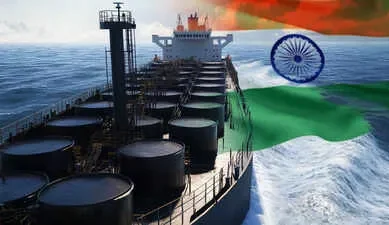Following US airstrikes on Iran’s nuclear facilities at Natanz, Isfahan, and Fordow, tensions in the Middle East have reached alarming levels. In response, Iran’s parliament has authorised the potential closure of the Strait of Hormuz, a move that could dramatically disrupt global oil and gas supplies.
While the final decision rests with Iran’s Supreme National Security Council, this development has raised global concerns, especially for major oil-importing countries like India, which heavily depend on this route.
What Is the Strait of Hormuz and Why Is It Crucial?
The Strait of Hormuz is a narrow maritime passage connecting the Persian Gulf and the Gulf of Oman, serving as the only sea route for Gulf nations to export oil to the rest of the world.
- At its narrowest point, the Strait is just 33 km wide, with shipping lanes only 3 km in each direction.
- Nearly 20 million barrels of oil—about 20% of global daily consumption—pass through the Strait daily.
- It also facilitates the transportation of a significant portion of the world’s liquefied natural gas (LNG), particularly from Qatar.
According to the U.S. Energy Information Administration (EIA), in 2024 and Q1 of 2025, the Strait accounted for 25% of all global seaborne oil trade.
US Reacts: “Economic Suicide” If Iran Closes the Strait
US Secretary of State Marco Rubio warned that closing the Strait would be “economic suicide” for Iran. He encouraged China—a major oil importer—to use its influence to prevent such action.
Meanwhile, nearly 50 oil tankers are reportedly attempting to exit the region, fearing escalation.
How Will the Closure Impact India?
India is among the top Asian importers of oil and gas passing through the Strait of Hormuz. According to EIA data:
- 84% of the crude oil and 83% of the LNG through the Strait was bound for Asia in 2024.
- China, India, Japan, and South Korea were the top recipients, accounting for 69% of all oil traffic via the Strait.
For India:
- Around 1.5 million barrels per day (out of its 5.5 million daily consumption) pass through the Strait.
- Nearly half of its LNG imports are routed through this channel.
Economic Repercussions for India
Foreign Affairs expert Robinder Sachdev told ANI:
“If Iran closes the Strait of Hormuz, India will definitely suffer… It will lead to rising oil prices, pushing inflation higher. For every $10 increase in crude, India’s GDP could take a 0.5% hit.”
Indian Government’s Response
Hardeep Singh Puri, India’s Petroleum Minister, remains cautiously optimistic:
“There’s enough oil in global markets. Even if the Strait is impacted, alternative supplies will emerge, particularly from the Western Hemisphere.”
He stressed that traditional suppliers would still be motivated to maintain trade due to revenue needs.
Oil Price Forecast: Will Brent Crude Surge?
Madhavi Arora, Chief Economist at Emkay Global, projected Brent oil at $70/barrel for FY26, with Q1 FY26 averaging $67–69. Despite geopolitical concerns, she remains conservative in altering forecasts, citing strong supply from OPEC+.
She notes:
- Each $10 rise in oil could raise CPI inflation by 35 basis points.
- Current Account Deficit (CAD) could rise by 0.4–0.5% of GDP.
- India’s GDP growth forecast of 6% may drop by up to 20 bps if Brent averages $80/barrel instead of $70.
Conclusion: Strait of Hormuz Closure Could Hit India Hard
If Iran proceeds with closing the Strait of Hormuz, it would mark a geopolitical and economic turning point, especially for energy-dependent nations like India. The ripple effects could lead to:
- Higher oil and gas prices
- Increased inflation
- Rising fiscal deficits
- Lower GDP growth
While India is seeking alternative suppliers, the nation remains vulnerable until the situation stabilizes. Global diplomacy and market dynamics will play a critical role in mitigating the fallout.
Key Takeaways:
- Strait of Hormuz handles 20% of global oil; closure could spike prices.
- India imports over 1.5 million barrels/day via this route.
- A $10 increase in crude may cut India’s GDP by 0.5%.
- Government remains cautiously optimistic about alternate supplies.

